The Network-Aware Camera-Server Is Here
The Panasonic AG-HPX600 is not so much a new camera as it is a new way of working. Taking advantage of a LAN or Wi-Fi connection, the new camera-server enables remote screening and collaboration on a level we haven’t experienced before.
I recently had the opportunity to work with the new camera on a short narrative project produced jointly by Chapman University and the Annapurna School of Film and Media in Hyderabad, India. Lighting conditions at the studio ran the gamut from bright sun at midday to late dusk and night; the HPX600 is at its heart a nonfiction and news/documentary camera and so was clearly working outside its normal job description in a Bollywood production environment.
The new Panasonic AG-HPX600 camera-server.
Performance was about what I expected in a state-of-the-art mid-level camcorder. The new 2/3-inch single-MOS sensor with F12 sensitivity and a 59dB S/N ratio is very quiet, with little noise apparent in the darkest shadows. In this respect, the camera borrows a page from Sony’s traditional playbook, applying plenty of noise reduction to produce noise-free images with a concomitant loss of shadow detail. A low-light shooting mode buried in the setup menus facilitates this look, adjusting the master detail, pedestal, and detail coring without the user having to make the individual adjustments.
Owing to the camera’s very clean images, high performance optics are imperative. To help this effort, the HPX600 employs chromatic aberration compensation (CAC) to suppress the most serious artifacts. CAC identifies the signature of a compatible lens and applies an average correction from a library of look-up tables (LUTs). The result is markedly improved performance from what would other otherwise be quite mediocre optics. CAC doesn’t take the place of a $25,000 lens, but it definitely helps. Poorly promoted by the company, CAC is becoming increasingly vital to today’s shooters, as cleaner noise-free cameras emerge and many more serious lens defects are revealed.
At only 6.2 lbs (2.8kg) sans battery, viewfinder, or accessories, the HPX600 is lightweight and well-balanced. Its low profile makes the camera a joy to hold and peer over, watching, as we always, must for potential perils approaching from the blind side. The two-way color viewfinder (available as an option) doubles as an LCD screen and may well be the best all-purpose viewfinder Panasonic has ever produced. The camera’s overall power draw is a scant 17W without the Wi-Fi board or encoder, so a single Dionic 90 may last, as it did for me, an entire shooting day. I liked the raised profile now protecting the side toggles. From experience I know these switches can be re-positioned inadvertently in the heat of battle.
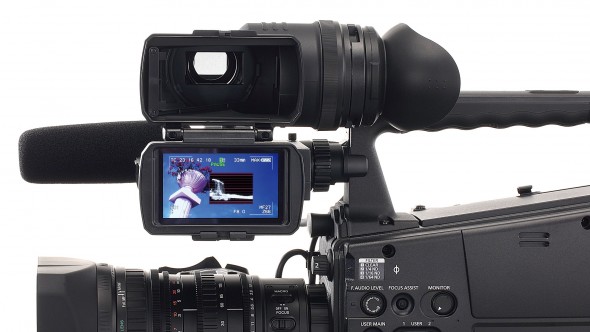
The bright and sharp two-way color viewfinder (optional) does not take the place functionally of a swing-out LCD finder. Mirroring is not automatic; it is controlled manually via a front-mounted toggle.
Despite the obvious gains and improvements, the real story here is operational. The HPX600 equipped with the optional encoder board produces high-resolution QuickTime proxies, which can be streamed via Wi-Fi (also an option) or wired LAN and viewed in the browser of a laptop, iPad, tablet, or smartphone. The camera supports a cloud-based workflow that includes effective metadata management, simple editing of the proxy H.264 videos, remote camera operation and viewing effectively from pretty much anywhere. I like the idea of reducing the clutch of personnel around the camera, especially on a crowded set. Spreading the kibbutzers around the space or around the world, each staring aimlessly into his or her iPhone or iPad, seems to me an excellent form of collaboration.
Aah, the beauty of P2! The proxy video is recorded onto an SDHC or P2 card and placed in a dedicated folder.
Remote viewing via Wi-Fi and a browser has another aspect to consider: The latency of several seconds in the proxy video can be disconcerting when viewing on or near the live set. The aforementioned kibbutzers will need to accommodate this delay, positioning themselves accordingly to avoid the schizoid out-of-sync condition.
The HPX600 allows wireless streaming of high-resolution proxy videos, metadata support, and in-camera editing, via a laptop or tablet.
What's Not to Like?
What didn’t I like about the HPX600? Several things. The new LCD menu screen is bright, with many useful functions, but it is maddeningly non-intuitive. C’mon, guys. Shooters have other things to do than labor for hours trying to figure out how to access basic menu functions.
The camera lacks the expected swing-out finder, and so shooters must rely on the new two-way viewfinder for comparable functionality. This doesn’t work out as well. Also, the viewfinder in my camera, an early production model, lacked the proper tension ring to positively secure the finder to the camera body.
The new camera, under the competent control of Chapman University’s Nate Lertpreechapakdee, meets Bollywood in Hyderabad, India.
The flimsy plastic door covering the P2 cards is another sore point. A cost-saving move for sure, Sony has used the plastic door ruse for years to help distinguish its industrial grade products from the pricier broadcast line. Serious professionals hate the plastic door. So why are we seeing it here?
The same diatribe applies to the chintzy menu-selection dial, borrowed from the company’s lower-price stable of cameras. Unlike in the HPX250, the menu selection dial here is accessed frequently and plays a much more critical role. The cheap plastic dial is not nearly robust enough to withstand the rigors of a news station’s usual rough-and-tumble operations.
The camera accommodates emoting actresses well.
The HPX600 camera-server is revolutionary in many respects and a harbinger of greater things to come. Its operational advantages and network-aware features reflect Panasonic’s forward thinking. The challenge for the company as a builder of rugged and well-built products is to not forget where it’s been.
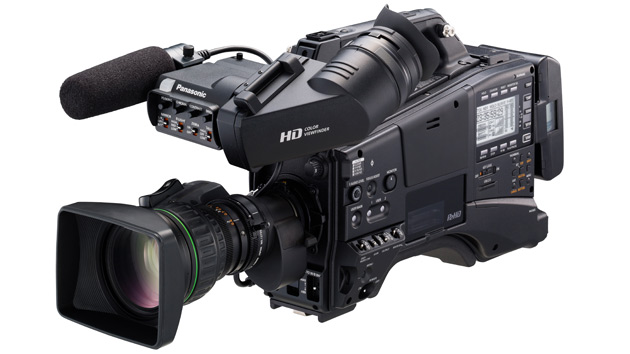
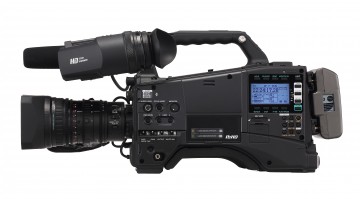
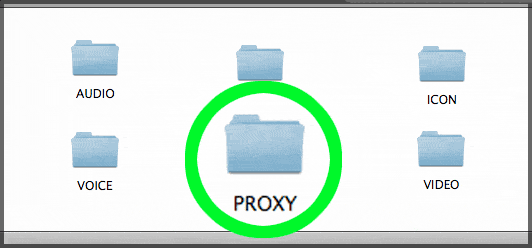
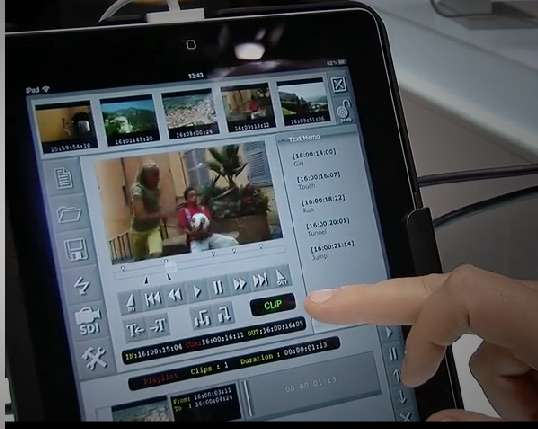
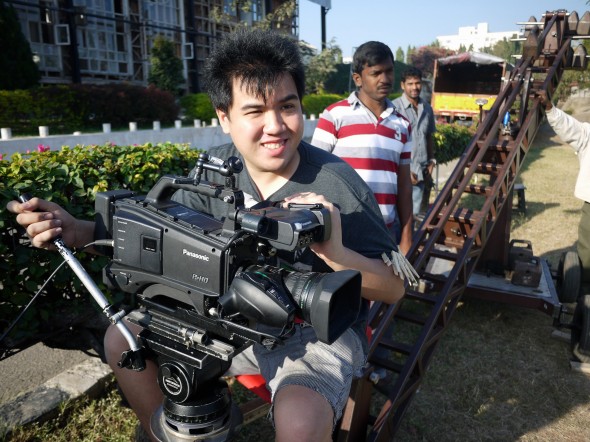











Leave a Reply